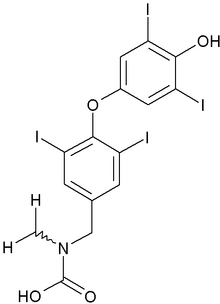NEW YORK -- Early November brought the good, the bad and the ugly for generic drug makers. As third quarter results came out, the top three generic drug makers demonstrated the power of me-too drugs in today's marketplace, as well as the intense competition that negatively impacts pricing and volume.
Teva Pharmaceutical Industries, reported net sales of $1.25 million, up 53 percent compared with the year-ago period, and net income of $252 million, up 61 percent over the comparable quarter in 2003. The No. 1 generic drug maker in the United States by prescriptions dispensed, according to IMS Health, reported that 64 percent of its net sales were generated in the United States, compared with 26 percent in Europe and 10 percent in the rest of the world.
Teva also reported that its generic pipeline currently comprises 120 product applications, including 14 tentative approvals, with total annual brand sales of more than $75 billion. Of its product applications, Teva also noted that 67 were submitted under Paragraph IV, of which 25 may qualify for first-to-file status and which could yield the drug maker six-month exclusivity for drugs with annual branded sales of $20 billion.
Teva also reported its spending on research and development grew to $95 million, a 54 percent increase over the same quarter last year. The increase reflects substantially higher generic and innovative R&D efforts, according to the company.
Mylan, however, with its financial results for the three months ended Sept. 30, represents all of the challenges generic drug makers are facing in a volatile time in the industry.
For starters, the company reported net revenues of $307 million and net earnings of $48.7 million--decreases of 15 percent and 47 percent, respectively, compared with the year-ago period.
The generic drug maker received a significant contribution to its net revenues during the second quarter of fiscal 2004 for omeprazole, the generic version of Prilosec. But competition from over-the-counter Prilosec and substitution from other branded products have hurt sales. Sales of one of its highest-selling products, carbidopa/levodopa, the generic version of Sinemet, have been impacted negatively by competition, driving down pricing and volume.
Other roadblocks, such as an authorized generic version of nitrofurantoin/macrocrystals, Procter & Gamble's Macrobid, hurt Mylan's bottom line. The drug maker received first-to-file status giving it 180-day exclusivity for the drug, but Procter & Gamble entered an agreement with another generic drug maker to launch an authorized generic on the market immediately after Mylan's launch. Mylan has filed a lawsuit and a citizen's petition with the U.S. Food and Drug Administration on the matter.
Mylan also experienced a delay of its generic fentanyl patch, the equivalent of Alza Corp.'s Duragesic, and has filed suit against the Food and Drug Administration seeking to have its final approval reinstated after it was rescinded in June. And finally, due to the approval of supplemental new drug applications, the company did not secure first-to-file status for its generic version of Jones Pharma's Levoxyl or Abbott Laboratories' Synthroid.
No. 2-ranked Mylan's R&D expenses increased 17 percent in its generic segment, reaching $16.5 million, while its branded segment decreased R&D spending by 44 percent.
No. 3-ranked Watson Pharmaceuticals reported strong growth in its generic segment compared with the year-ago period, while its branded arm experienced a slight decline.
Watson reported its net revenue mix was 76 percent generic and 24 percent branded, compared with 70 percent and 30 percent for the same period last year.
It also reported that its R&D expenses increased 30 percent in the third quarter compared to the prior period as it continues to invest in its generic pipeline.
COPYRIGHT 2004 Reproduced with permission of the copyright holder. Further reproduction or distribution is prohibited without permission.
COPYRIGHT 2004 Gale Group



